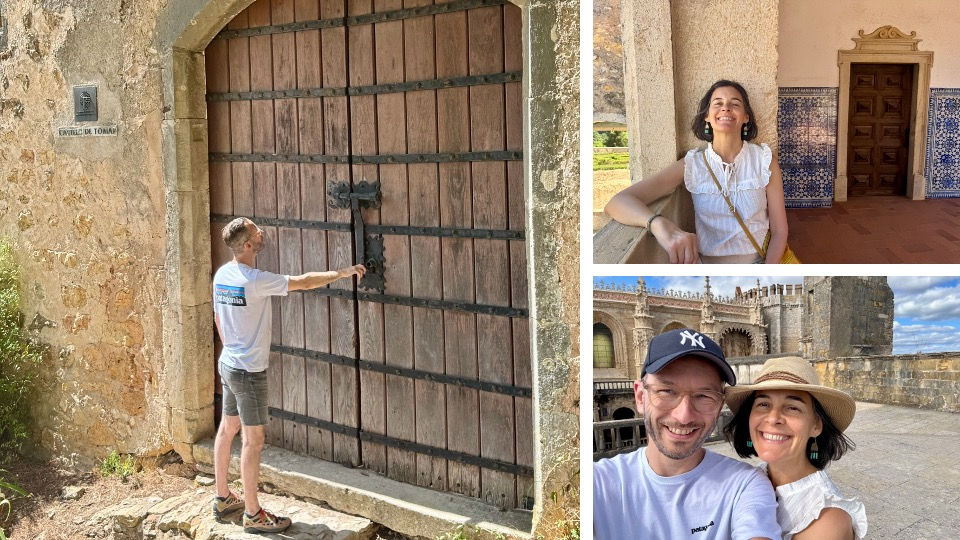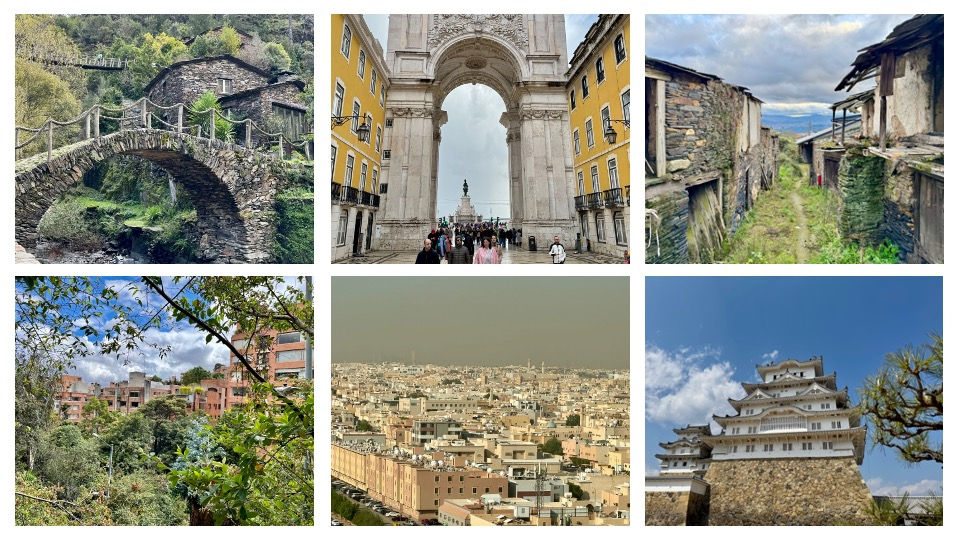From Fortresses of Fear to Regenerative Castles of Belonging
- Menno
- Aug 26
- 5 min read
Updated: Aug 27
In Tomar, Portugal, the Templar castle rises from the hill like a clenched fist of stone. It reflects an era when walls symbolised survival, when strength was carved in granite, and authority was maintained by sword and seal. These fortresses echoed masculinity in its most literal sense: hierarchy, control, and ownership. They divided the world into winners and losers, insiders and outsiders. Built to endure, their permanence was rooted in fear. Today, our castles have transformed into corporate towers, political strongholds, and gated ideologies. Functional, yes, but fragmented. They separate us from nature, from intuition, and from a deeper sense of belonging.
The Question of New Castles
Sometimes, a question pierces the stone: What if a castle could be more than just a fortress? What if its walls didn’t separate, but instead welcomed? What if towers became lights rather than battlements? What if protection meant nurturing life, not just defending against it? This isn’t a romantic longing for the past; it’s a vital imagining of a future that benefits both people and the planet. Yet, the old world pulls at us. We understand the language of defence: budgets, borders, brand dominance. We rely on control and efficiency, believing they will keep us safe. We hesitate because new castles – grounded in reciprocity, not extraction – threaten the certainties on which we’ve built our careers and identities. To let go of the fortress is to risk vulnerability.

Crossing into Living Systems Castles
Change starts with an encounter with a mentor, a community, or a place that works with life’s patterns instead of against them. Here, we see different blueprints:
· Rooted in nature’s cycles – structures that breathe with the seasons.
· Held by communities, not the King – stewardship over ownership.
· Powered by shared purpose, not conquest – a culture of co-creation.
The drawbridge lowers. We step inside. The work is not easy. Entrenched systems resist change, insisting that walls must be high and gates must be locked. Within ourselves, we encounter old habits – impatience, dominance, and a fear of uncertainty. However, we also find allies: architects who design with the land, rather than over it. Farmers who restore soil rather than strip it. Artists who weave beauty into utility. Communities that govern by listening, not dictating.
The Reckoning of Castles Built on Fear
Then comes the reckoning. Sometimes it arises from personal burnout, revealing the cost of constant defence. It could be the sight of an ecosystem collapsing beneath our watch. It might be the fracture of a community divided by distrust. Sometimes it burns externally like wildfires that have ravaged ecosystems before our eyes, consuming what can no longer survive. These flames are not just destruction but dragon energy: fierce, transformative, demanding that we face what we have denied. In myth, the hero must confront dragons again and again, not to conquer them but to learn what they guard. So too, our trials strip away illusions. They reveal the true price of fortresses built on fear: isolation, depletion, and loss. Yet in the stillness after the storm, we remember. We recall that strength can be gentle. The cycles of giving and receiving keep life alive. That care is not weakness but a power that endures. Here, the “treasure” is not domination but relationship: to each other, to the earth, to time itself.

Healing the Masculine and Feminine Castles
We begin to weave the healthy masculine – focus, protection, action – with the feminine in her full spectrum: creative, intuitive, nurturing, but also wild, primal, and free. Neither dominates; both serve life. Socially, this means replacing hierarchies with shared stewardship. Ecologically, it involves restoring rivers and soils sacrificed for short-term gain. The castle shifts in meaning: no longer a monument to fear, but a sanctuary of balance. We return to our communities not just with new ideas, but with a way of being that fosters freedom, creativity, and conditions for all life to flourish. The future castle does not stand as a monument to fear, but as a sanctuary of renewal: rooted in local ecologies, designed to last for centuries yet adaptable to change, measured by belonging, not merely by growth. These sanctuaries are not built for the privileged few; they are legacies for generations yet unborn. Yet, their creation depends on us, on the choices we make now, and the courage to build differently. Which is why we must ask: what does it mean to build castles for a regenerative era? Below are ten reasons that invite all who shape the urban environment to embrace the regenerative era.
Building Castles for a Regenerative Era
This is the invitation before us: to build castles for a regenerative era. Below are ten reasons urging all those who shape the urban environment to adopt a new form of power.
1. From Fortresses of Fear to Foundations of Care – Old castles signified dominance and defence. Regenerative castles stem from care, creativity, and connection, where power safeguards and protection nurture.
2. From Fragility to Resilience – Fortresses fall apart during crises. Regenerative castles pulse with the rhythms of life, absorbing shocks and adapting to change. Strength here is both rooted (masculine) and flexible (feminine).
3. From Control to Co-Creation – The era of hierarchy, command and conquer is ending. True power now lies in co-creating with communities, ecosystems, and future generations.
4. From Ownership to Stewardship – Kings owned castles yesterday. Communities, cultures, and lineages entrust sanctuaries of tomorrow.
5. From Extraction to Regeneration – Where fortresses once exhausted soil, water, and spirit, regenerative castles restore and innovate. They give back more than they take.
6. From Masculine Domination to Sacred Balance – The old castles celebrated masculine force. The new sanctuaries blend structure with flow, strength with care, action with intuition.
7. From Isolation to Belonging – Old fortresses, built on linear and one-dimensional divisions of ‘inside vs. outside,’ give way to regenerative castles that foster belonging, where human and more-than-human life thrive together.
8. From Short-Term Gain to Generational Legacy – True power is measured not only by profit but by what endures across generations.
9. From Competition to Collaboration – Inside fortresses, rivals fought for supremacy. In sanctuaries, allies craft futures together.
10. From Question to Commitment – The drawbridge is lowered. The blueprint is ready. The question is no longer whether we can build them, but whether we will.

The Choice of Castles Ahead
In Tomar, the ancient castle still stands like a clenched fist of stone, a reminder of an era when survival depended on walls, weapons, and separation. But our time demands something different. The castles of this transformative age are built not on fear, but on care; not on exclusion, but on belonging. Where once the fortress shut itself off from the world, the sanctuary now opens itself to life. Its walls offer shelter without isolation, its towers serve as beacons of purpose, and its courtyards hum with connection. We stand at a threshold, much like those Templar masons once did, stone in hand. The difference is that our legacy need not be one of dominance. It can be a balance of stewardship and renewal. The question is not whether castles will continue to rise in our cities, towns, and landscapes, but what kind of castles they will be. Will they remain clenched fists of the old world, or will we lay the first stones of open palms for the future? The drawbridge is lowered. The choice is ours.
Authors:





Comments